2018 IECC Air Barrier Requirements: Compliance Guide
Importance Understanding 2018 IECC Barrier
As a contractor or builder, staying up to date with the latest building codes and requirements is essential. 2018, International Energy Conservation Code (IECC) introduced new barrier requirements significant Implications for Construction Projects. Understanding and complying with these requirements is crucial for ensuring the energy efficiency and durability of buildings.
What are the 2018 IECC Air Barrier Requirements?
2018 IECC includes mandates barriers buildings minimize leakage improve efficiency. Requirements apply residential commercial construction designed enhance performance envelopes.
According IECC, barriers installed control leakage building. This includes sealing joints and seams, as well as covering penetrations such as doors, windows, and utility penetrations. The goal is to reduce the loss of conditioned air and prevent the infiltration of outdoor air, which can impact indoor air quality and energy consumption.
Implications for Construction Projects
Complying with the 2018 IECC air barrier requirements may require changes to construction practices and materials. Implementing effective air barrier systems can improve energy efficiency, reduce utility costs, and enhance building performance. Additionally, meeting these requirements can contribute to achieving green building certifications, such as LEED or ENERGY STAR.
Case Study: Impact of Air Barrier Compliance
| Project | Energy Savings | Cost Reduction |
|---|---|---|
| Residential Development A | 20% | $15,000/year |
| Commercial Building B | 15% | $25,000/year |
According to a study conducted by the Building Performance Institute, buildings that comply with air barrier requirements can experience significant energy savings and cost reductions. This demonstrates the tangible benefits of integrating air barrier systems into construction projects.
Ensuring Compliance
To ensure compliance with the 2018 IECC air barrier requirements, contractors and builders should work closely with architects, engineers, and building code officials. Proper planning, design, and installation of air barrier systems are essential for meeting these requirements and achieving the desired building performance.
The 2018 IECC air barrier requirements present an opportunity for the construction industry to improve building efficiency and performance. Adhering to these requirements can result in long-term benefits for building owners, occupants, and the environment. By staying informed and proactive, contractors and builders can contribute to the advancement of sustainable and energy-efficient construction practices.
Frequently Asked Legal Questions About 2018 IECC Air Barrier Requirements
| Legal Question | Answer |
|---|---|
| 1. What are the key air barrier requirements in the 2018 IECC? | The 2018 IECC requires air barriers to be installed in ceilings, walls, floors, and foundations to limit air leakage and improve energy efficiency. Requirements essential ensure compliance IECC standards carefully adhered to. |
| 2. How can I ensure that my building meets the 2018 IECC air barrier requirements? | To ensure compliance, it is important to work with experienced professionals who understand the intricacies of the 2018 IECC air barrier requirements. Consulting with architects, engineers, and contractors who are well-versed in these regulations can help ensure that your building meets the necessary standards. |
| 3. What are the potential legal consequences of not complying with the 2018 IECC air barrier requirements? | Failure to comply with the 2018 IECC air barrier requirements can result in legal penalties, fines, and even project delays. Crucial prioritize adherence standards avoid potential issues line. |
| 4. Can I seek legal recourse if a contractor fails to meet the 2018 IECC air barrier requirements? | If a contractor fails to meet the 2018 IECC air barrier requirements, you may have legal grounds to seek recourse. Consult with a legal professional to understand your options and take appropriate action to address any non-compliance issues. |
| 5. Are there any exemptions or variations to the 2018 IECC air barrier requirements? | While there may be exemptions or variations for specific cases, it is crucial to thoroughly understand the regulations and consult with legal and industry professionals to ensure compliance. It is important to note that exemptions should not be assumed without proper guidance. |
| 6. What are the best practices for documenting compliance with the 2018 IECC air barrier requirements? | Documenting compliance with the 2018 IECC air barrier requirements is essential for legal protection. Maintain detailed records of design plans, construction processes, and materials used to demonstrate adherence to the regulations in case of any legal disputes. |
| 7. How often do the 2018 IECC air barrier requirements undergo updates or revisions? | The 2018 IECC air barrier requirements are subject to periodic updates and revisions. Staying informed about any changes to the regulations and proactively adapting to new standards is crucial for legal compliance and risk management. |
| 8. Can I challenge the 2018 IECC air barrier requirements if I believe they are unreasonable or impractical? | Challenging the 2018 IECC air barrier requirements may be possible under certain circumstances, but it requires legal expertise and a strong basis for argument. Consult with legal professionals to assess the feasibility and potential implications of challenging these regulations. |
| 9. How do the 2018 IECC air barrier requirements align with other building codes and standards? | The 2018 IECC air barrier requirements are designed to complement and align with other building codes and standards. Understanding the interconnected nature of these regulations is essential for legal compliance and overall building integrity. |
| 10. What resources are available for staying updated on the 2018 IECC air barrier requirements? | Various resources, including industry publications, professional associations, and legal advisories, can provide valuable updates and insights on the 2018 IECC air barrier requirements. Staying informed and actively seeking current information is essential for legal compliance and risk management. |
Contract for 2018 IECC Air Barrier Requirements
This contract (the “Contract”) is entered into on this [insert date] by and between [Party A] and [Party B] for the purpose of outlining the air barrier requirements under the 2018 International Energy Conservation Code (“IECC”).
| 1. Definitions | |
|---|---|
| 1.1 “IECC” refers to the 2018 International Energy Conservation Code as published by the International Code Council. | 1.2 “Air Barrier” refers to materials or systems specifically designed and installed to control airflow between a conditioned space and an unconditioned space. |
| 2. Requirements | |
|---|---|
| 2.1 All new construction and major renovations covered by the IECC shall comply with the air barrier requirements as outlined in section C402.5 IECC. | 2.2 The air barrier shall be continuous and complete, consisting of air barrier materials or assemblies that are installed and sealed to limit air leakage. |
| 3. Compliance | |
|---|---|
| 3.1 [Party A] shall ensure that all construction and renovations under its purview are in compliance with the air barrier requirements of the IECC. | 3.2 [Party B] shall provide documentation and verification of compliance with the air barrier requirements as requested by [Party A] or the relevant authorities. |
| 4. Governing Law |
|---|
| 4.1 This Contract shall be governed by and construed in accordance with the laws of the state of [insert state], without regard to its conflict of law principles. |
IN WITNESS WHEREOF, the Parties hereto have executed this Contract as of the date first above written.




